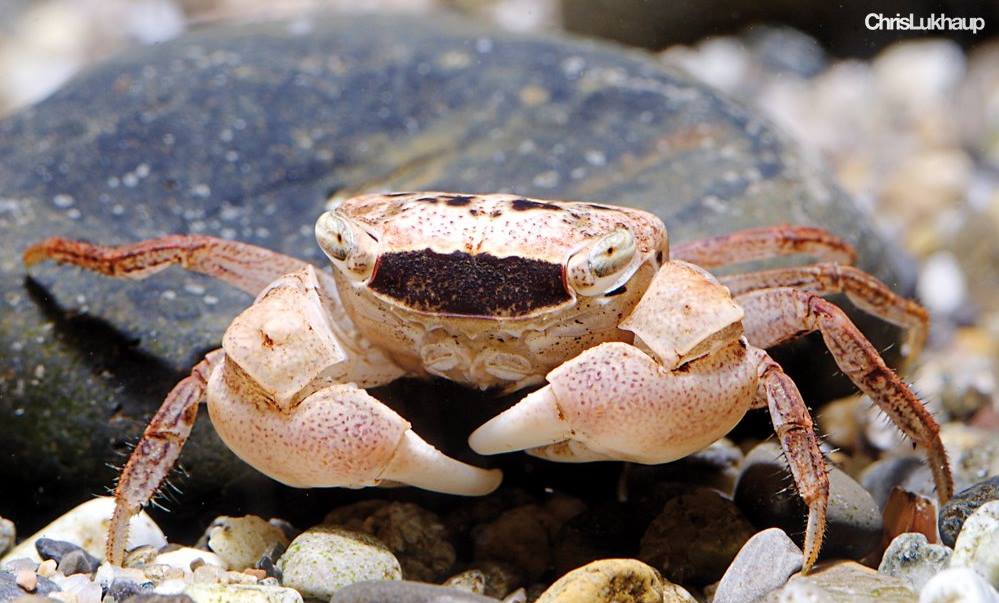Mangrove crab husbandry
Keeping mangrove crabs
There are many beautiful, also from the behavior very interesting crabs, which come to us from different mangrove areas. What they all have in common is that they are not purely aquatic crabs, i.e. they do not live exclusively in water. Therefore, mangrove crabs are kept in an aquaterrarium with a land part and a water part (approximately 50 to 50%). The aquaterrarium must be absolutely tight. Crabs are excellent climbers and amazingly strong. A light lid on the aquarium can be pushed up, especially by larger, stronger species, and should therefore be secured again extra in any case.
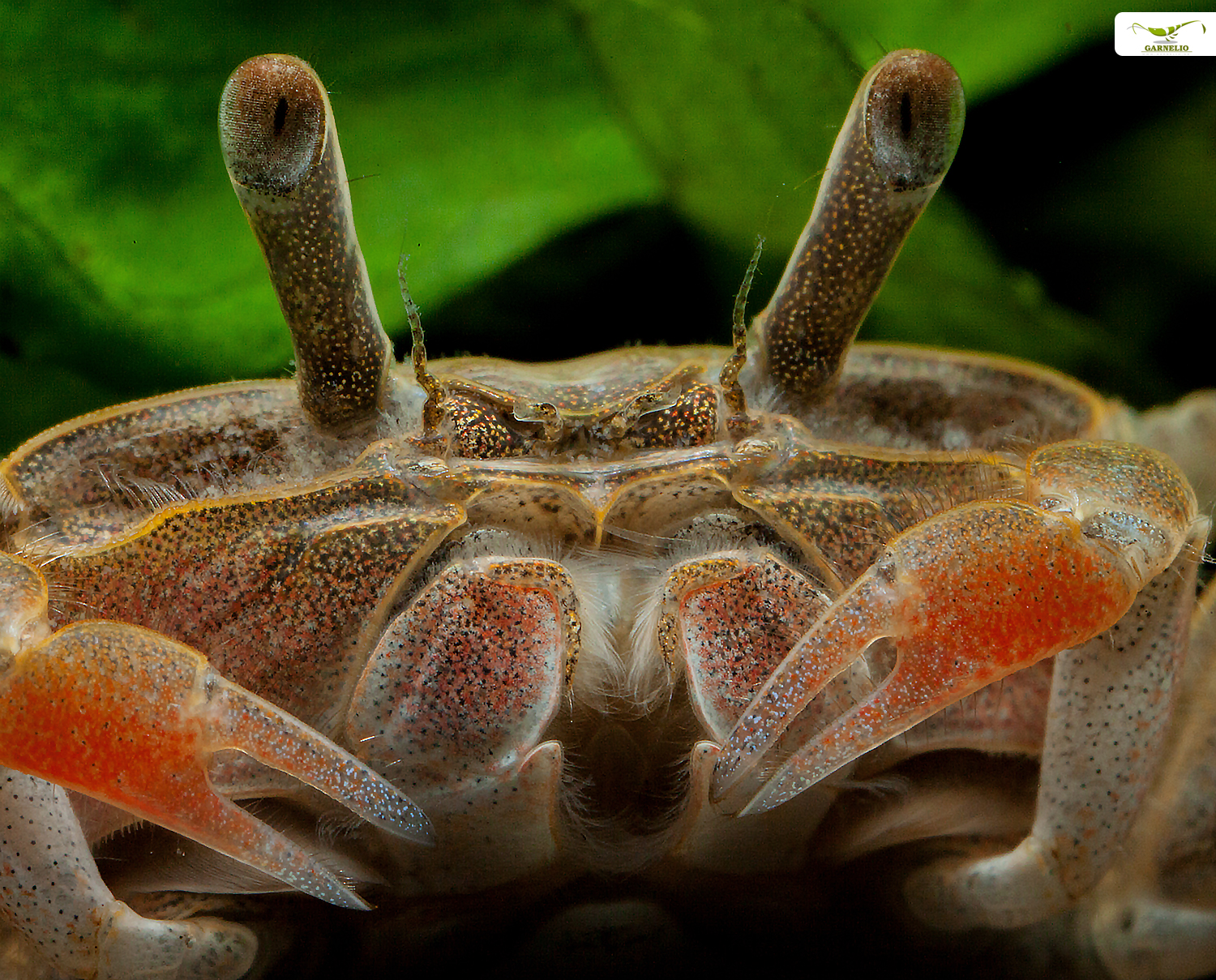
The land part for mangrove crabs
The land part should be massive enough for the animals to dig. As substrate for the land part terrarium humus, sand or unfertilized earth is recommended. For structuring and climbing you can offer cork plates or cork tubes, and also root wood is gladly accepted. Half coconuts or clay caves are also good hiding places, depending on the size of the crabs. Most mangrove crab species love to eat plants, especially with smaller species you can plant the land part of the aquaterrarium. For this purpose, you should choose unfertilized and unsprayed plants. Plants fresh from the store are often not, they should be kept outside for a few weeks before being placed in the aquaterrarium. The soil often contains substances unsuitable for crabs and should therefore be washed off as well as possible before planting. Since crabs are very good climbers, their action radius can be increased very easily and effectively with coarse-textured coconut mats on the walls of the land part.
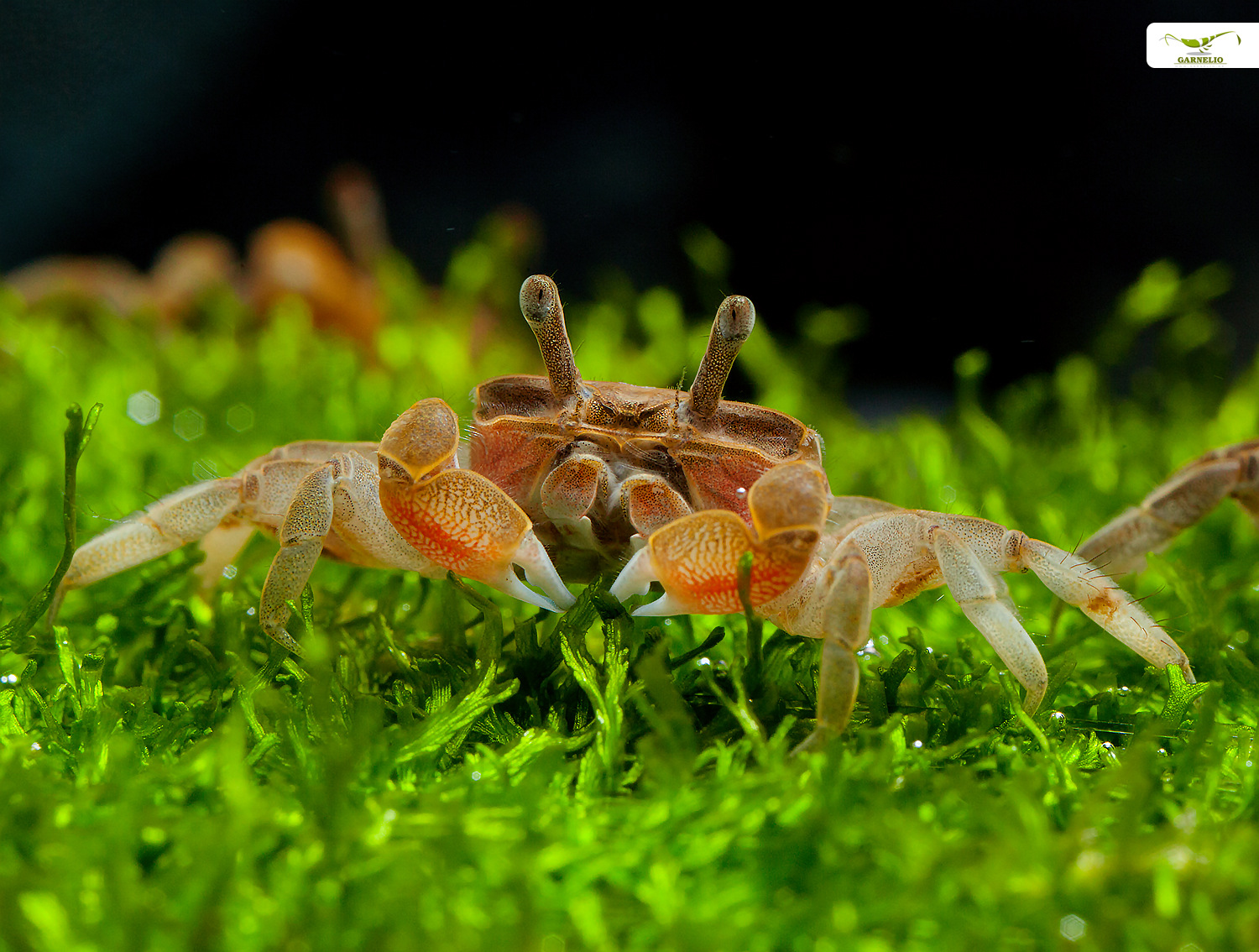
The water part
Sand or gravel can be used as substrate for the water part. Also the water part should be structured with roots and have at least one exit more than crabs. It can be planted with robust aquatic plants such as waterweed or hornwort - provided that the species kept can cope with fresh water - but you must expect that the crabs will go for the green stuff. If the water level is higher, floating plants such as shellflowers or frogbit are also a good alternative. A filter is definitely an advantage. The Dennerle corner filter, for example, can also be operated lying down and is therefore also suitable for shallower parts of the water. Depending on the species, freshwater or brackish water, possibly even seawater is required - more information on this can be found below in the descriptions of the individual species.

Mangrove crabs socialization?
If the kept mangrove crab species needs freshwater, shrimps can be kept well in this part of the water. Especially productive species like Neocardina davidi or Neocaridina palmata, but also Sulawesi inland shrimp are good partners for crabs. Since crabs are not exactly known for being clean eaters, a cleanup crew in the aquarium is actually very helpful. Snails - as well as mussels - are only of limited use for socializing, because they belong to the natural prey of most crabs and therefore they do not grow very old in crab tanks. Large-armed shrimp and crabs should also not be kept together with crabs, as the animals could seriously injure or even kill each other. Depending on the species, crabs are also skilled hunters that can catch and eat fish. Species should also not be mixed together, as crabs use sophisticated communication systems within a species and different species simply do not understand each other.
Since mangrove crabs are very social animals that interact and communicate among themselves in amazing ways, they should definitely be kept in a small or even larger group. We will go into more detail about group size and composition in the descriptions of the individual species.
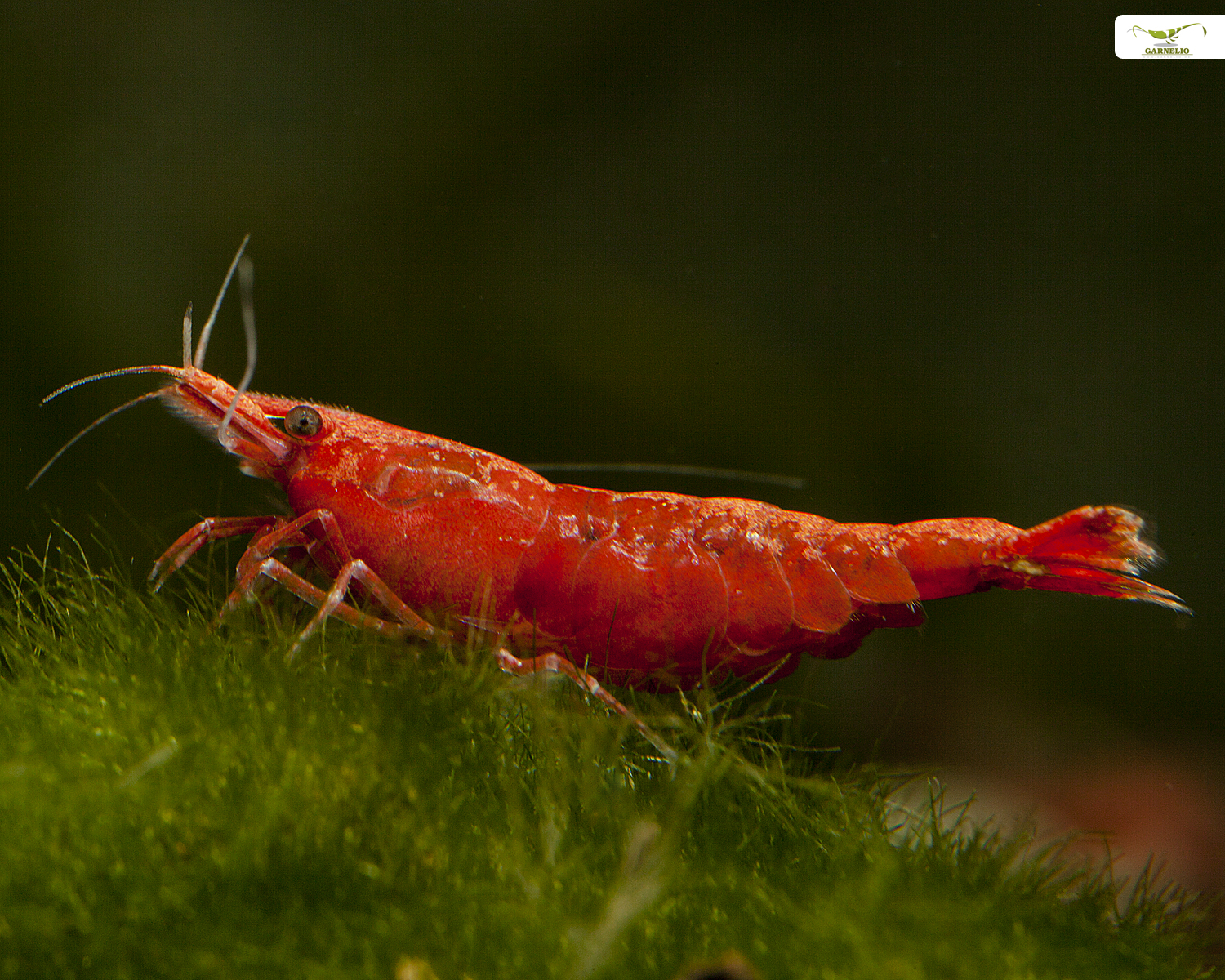
Propagation of mangrove crabs
For reproduction mangrove crabs need salt water. Females carry a very large number of very small eggs and release larvae that require brackish to seawater for development. Breeding of various species has been successful, but is very laborious.
Food
Mangrove crabs eat mainly foliage in nature. They contribute to a large extent to bring the fallen leaves of the trees back into the nutrient cycle. Brown autumn leaves should always be present in the aquaterrarium as well. It can be given in the water part and on the land part. Otherwise, to avoid excessive water pollution, feeding should be done on the land part. A feeding dish is also a wise investment in the crab aquaterrarium. As omnivores, mangrove crabs take not only foliage, but also all kinds of fruits and vegetables (always wash well and peel if possible, fruits and vegetables from organic cultivation should be preferred), special crab food, but also freeze-dried insects and insect larvae, frozen food, raw unseasoned fish or even live food such as white isopods or springtails. These also act as scraps recyclers on the terrestrial portion. A certain amount of animal food is advisable, but meat from warm-blooded vertebrates should never be fed, as it can lead to molting problems. What food the individual crab actually accepts is very individual and varies from animal to animal.
The size of crabs always refers to the diameter of the carapace (head and breastplate) without the walking legs.
Species overview of mangrove crabs
Splendor dwarf crab - Ilyoplax sp.
Ilyoplax sp., the splendor dwarf crab , is a relatively new species in the hobby. It originates from Asia. With only 2 cm size it is a very small mangrove crab. It is very communicative and should therefore definitely be kept in a larger group with an excess of females. For three to five animals an aquaterrarium with 60 cm length is sufficient - bigger is of course always possible. This crab tolerates fresh water.
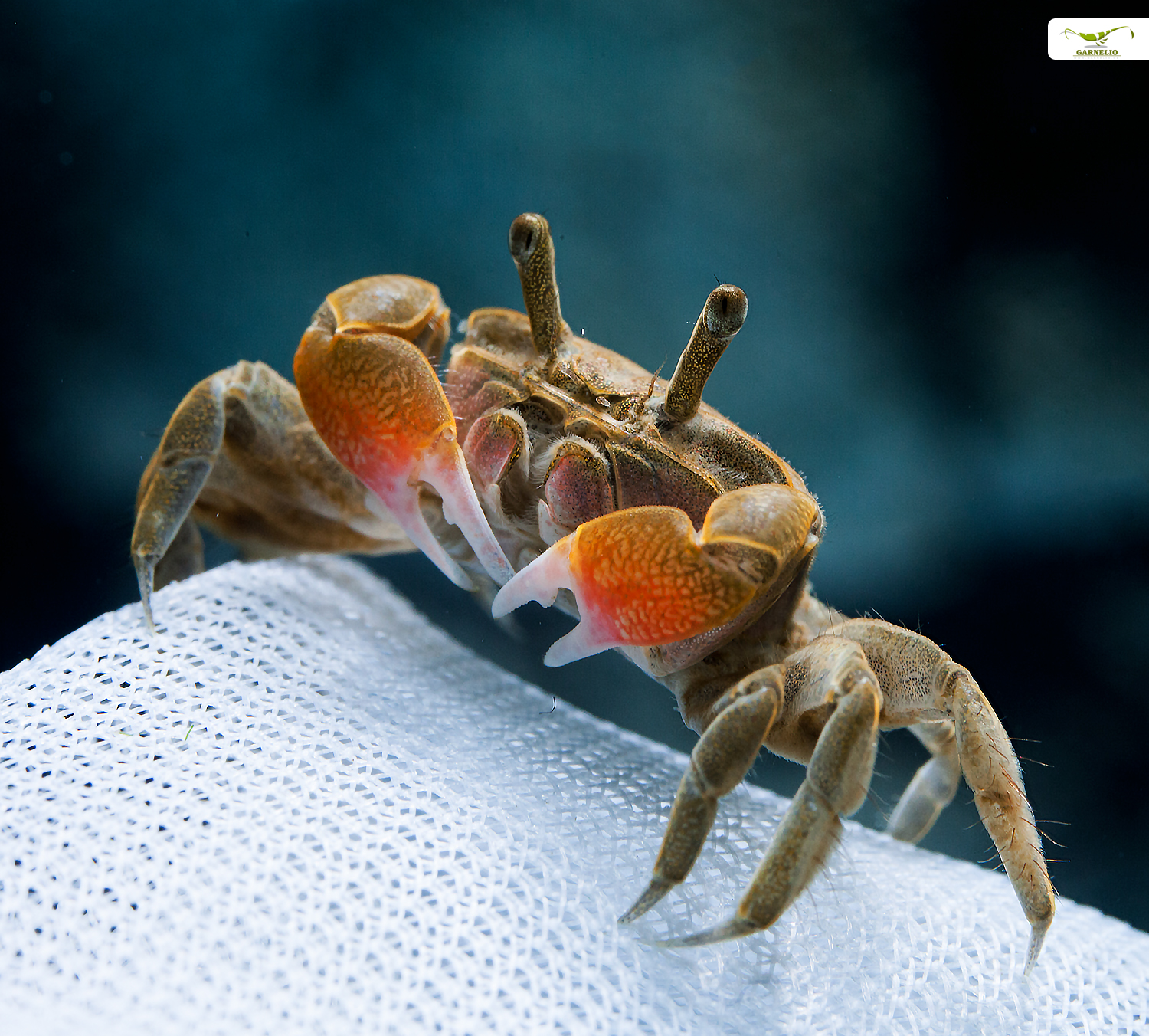
Red Mangrove Crab Pseudosesarma moeschi
With a carapace width of 3 cm the Red Mangrove Crab Pseudosesarma moeschi is also from Asia and has been in the hobby for a long time. A small group of these mangrove crabs, consisting of two females and one male, needs an aquaterrarium of at least 60 cm length. The Red Mangrove Crab should be fed a varied diet, but with a clear emphasis on plant foods. It is a distinct herbivore and tolerates fresh water.

Chameleon Crab - Metasesarma aubryi
The very peaceful Metasesarma aubryi, the chameleon crab, also originates from Asia. With 3 cm carapace width it also belongs to the rather smaller representatives. They like to dig very much and persistently, therefore the substrate should be sufficiently thick. This terrestrial crab does not need a water part in the terrarium, a water bowl and well moistened substrate are sufficient for it. Daily spraying is recommended to keep humidity high. A well structured terrarium of 60 cm or more is sufficient for a group of six consisting of four females and two males.
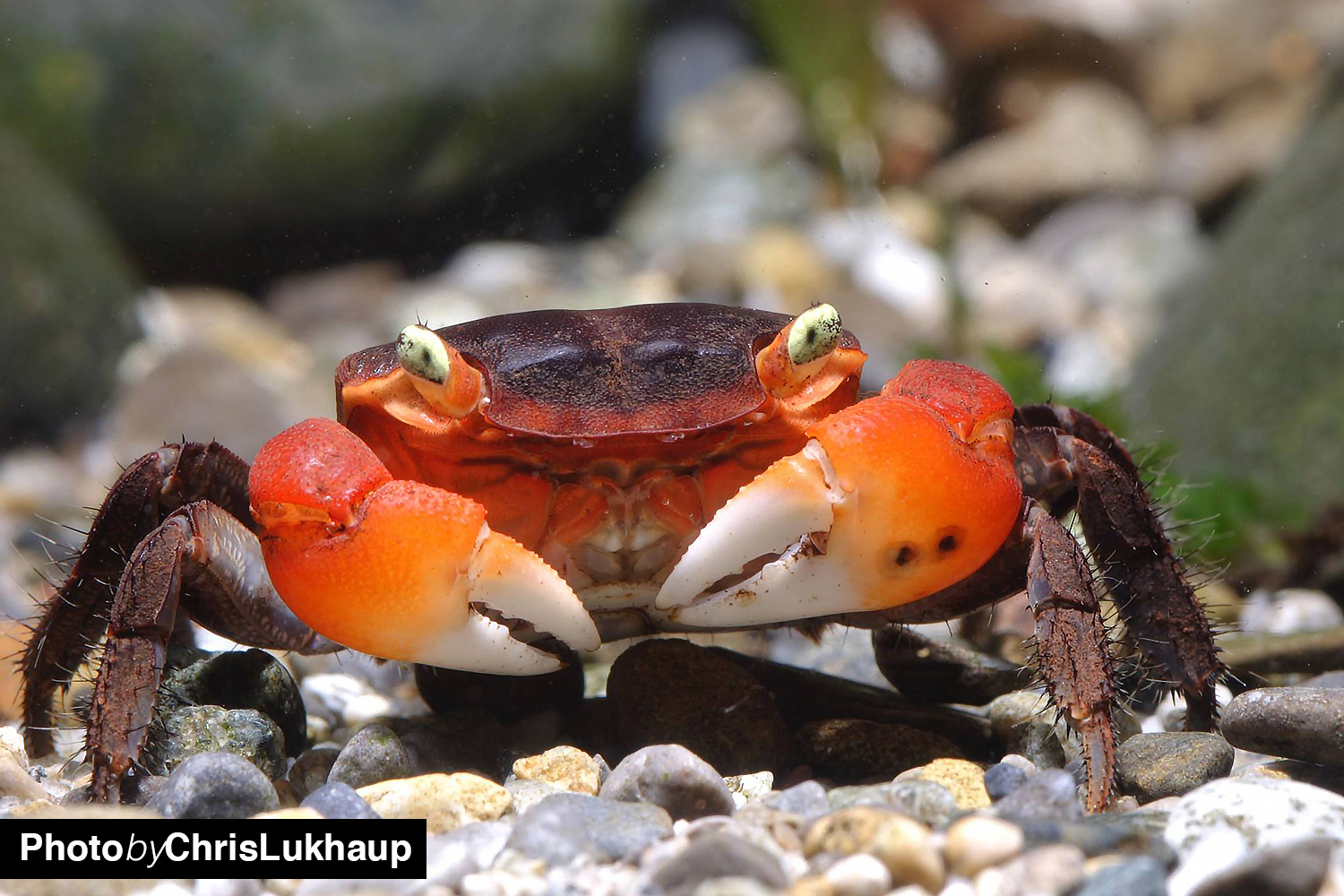
German Crab - Neosarmatium africanum
Another common species in the trade is Neosarmatium africanum, the German crab, so named because of its claw colors. It is found in Africa, Asia and Australia and reaches a carapace width of 6 cm and more. It feels comfortable in a small group with an excess of females. Fresh water is possible. The aquaterrarium should be at least 80 cm long for three to four animals.
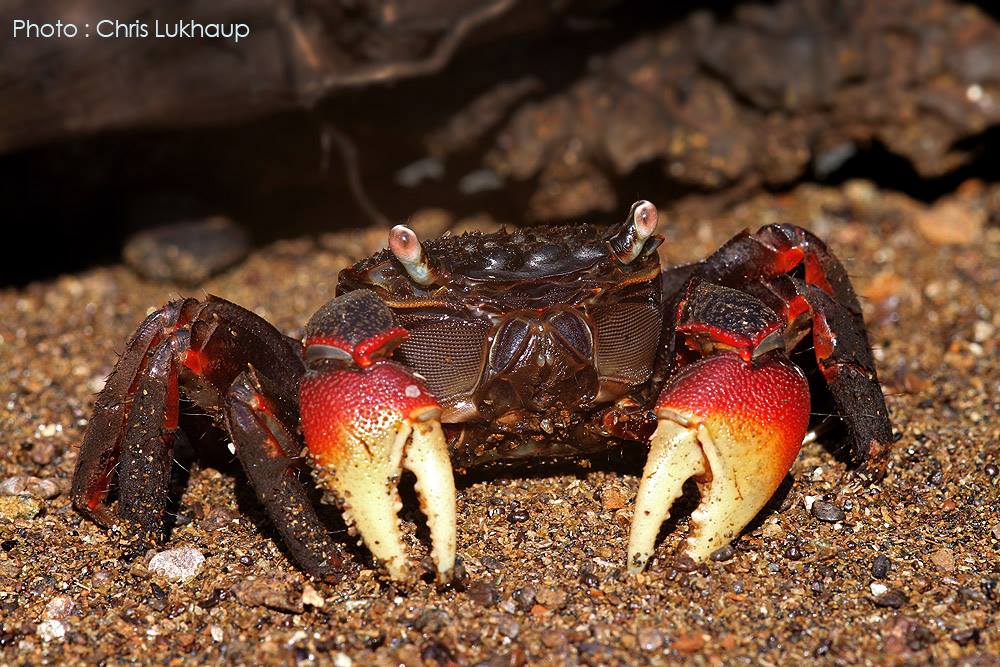
Dancing crab - Sesarmops intermedium
Also Sesarmops intermedium, the dancing crab, can live in freshwater, but also tolerates light brackish water. This mangrove crab, which also originates from Asia, also grows a bit larger with a size of about 4 cm. An aquaterrarium with an edge length of 80 cm is sufficient for a small group of one male and two females.
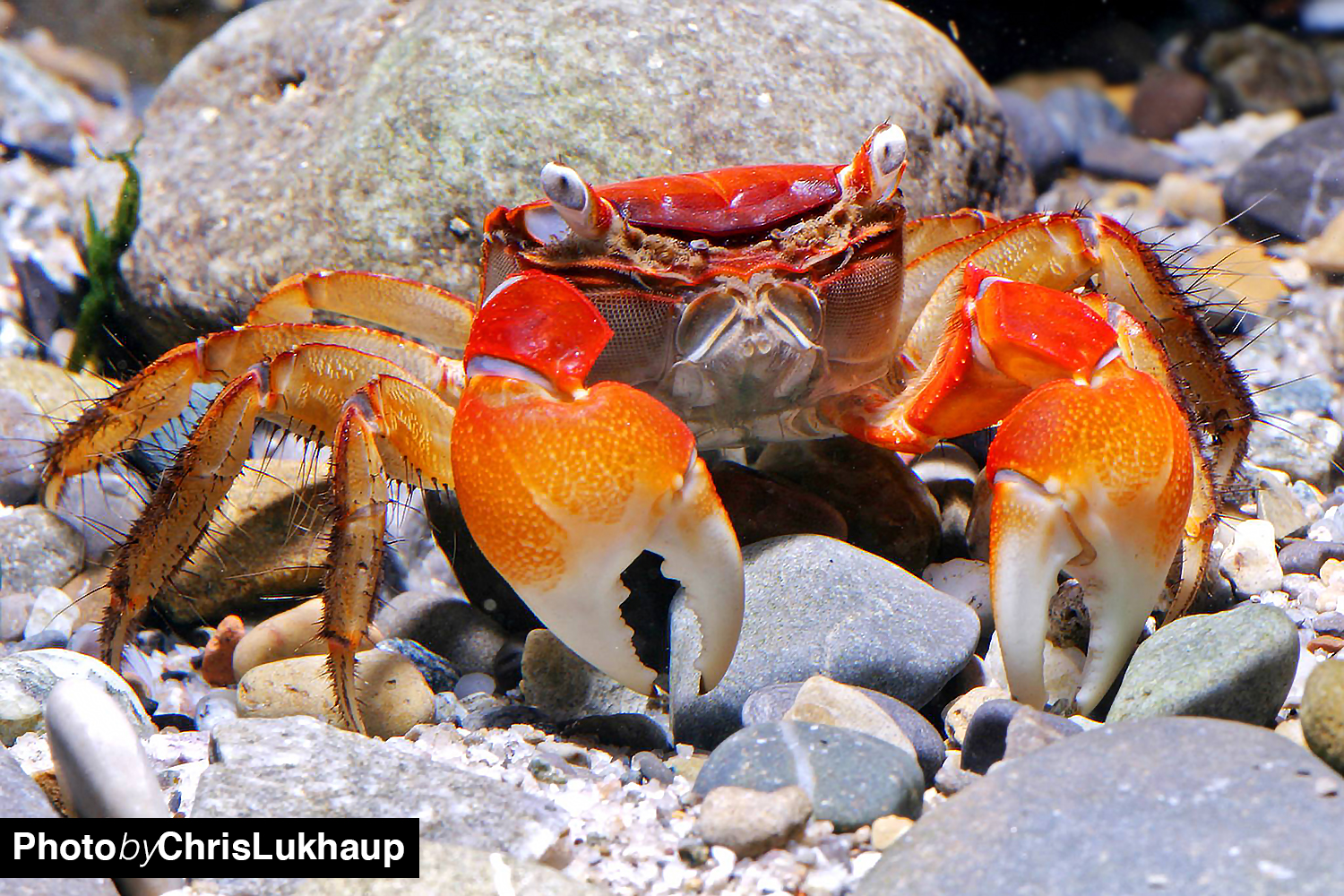
Blue Thai Crab - Pseudosesarma boucourti
The extremely peaceful, nocturnal Pseudosesarma boucourti, the Blue Thai Crab, mixes well with Neosarmatium, Sesarmops and other mangrove crabs. It also grows somewhat larger, reaching well over 4 cm carapace width. It tolerates freshwater or slightly brackish water.
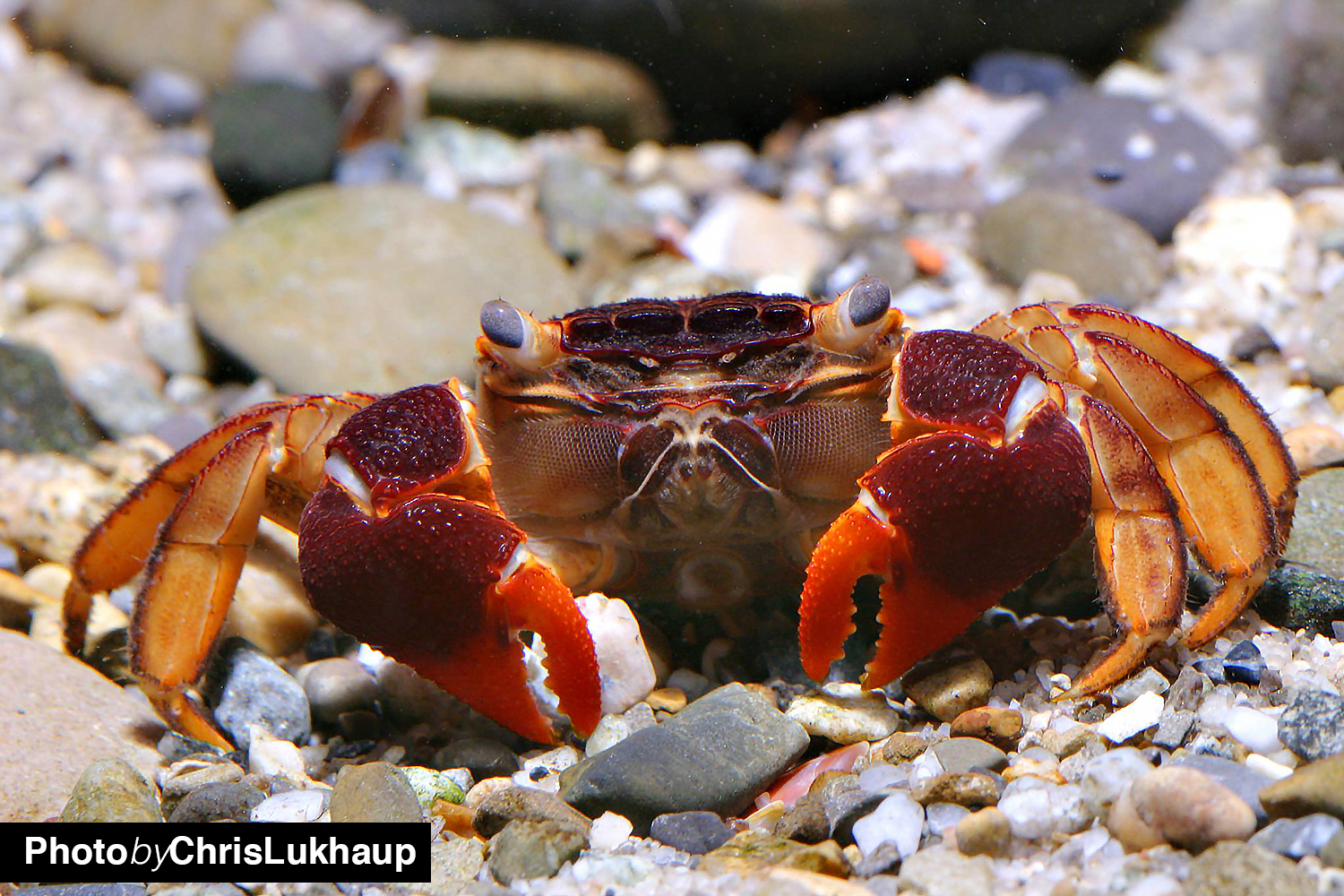
Marble Crab - Metasesarma obesum
A smaller representative of the mangrove crabs is Metasesarma obesum, the marble crab. With only 2 cm carapace width it does not grow very large. A small group of two males and three to four females can be kept in a well structured terrarium with an edge length of 60 cm or more, a smaller group can be kept in smaller tanks, which then have to be very well structured in height. A bowl with salt or fresh water in the terrarium is all this crab needs in water part. Spraying should be done daily, so that the humidity is high even without a large water part.
